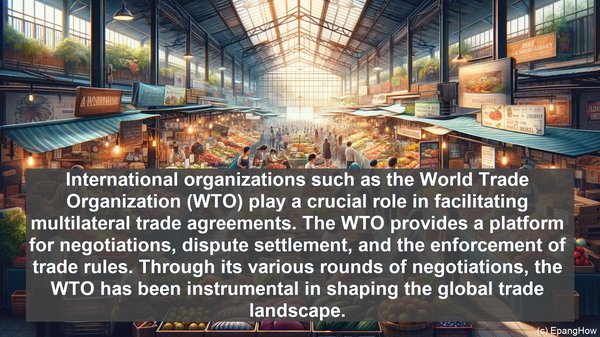Introduction: The Significance of Trade Agreements
Hello everyone! In today’s globalized world, trade agreements serve as the backbone of international commerce. They establish the rules, regulations, and terms under which countries engage in economic transactions. While bilateral and multilateral trade agreements share the common objective of fostering economic cooperation, they differ in their scope and reach.
Bilateral Trade Agreements: A Closer Look
As the name suggests, bilateral trade agreements are agreements between two countries. These agreements focus on enhancing trade and investment between the two signatory nations. Negotiations in bilateral agreements tend to be more streamlined and specific, as they only involve two parties. This allows for a more targeted approach to address the concerns and interests of both countries involved.
Key Features and Benefits of Bilateral Trade Agreements
Bilateral trade agreements often cover a wide range of areas, including market access, tariffs, intellectual property rights, and services. By reducing or eliminating trade barriers such as tariffs and quotas, these agreements aim to promote the flow of goods and services. They also provide a framework for addressing non-tariff barriers, such as regulatory standards. Additionally, bilateral agreements can foster deeper economic ties, leading to increased foreign direct investment and job creation.
Examples of Bilateral Trade Agreements
Bilateral trade agreements are prevalent across the globe. Some notable examples include the United States-Mexico-Canada Agreement (USMCA), the Australia-United States Free Trade Agreement (AUSFTA), and the Japan-Australia Economic Partnership Agreement. These agreements have not only facilitated trade but have also strengthened diplomatic relations between the countries involved.
Multilateral Trade Agreements: A Broader Perspective
In contrast to bilateral agreements, multilateral trade agreements involve multiple countries. These agreements aim to establish a common framework for trade among a group of nations. The negotiation process for multilateral agreements can be more complex and time-consuming, as it requires consensus among a larger number of parties. However, the inclusivity of these agreements can lead to more comprehensive and balanced outcomes.

The Role of International Organizations in Multilateral Agreements
International organizations such as the World Trade Organization (WTO) play a crucial role in facilitating multilateral trade agreements. The WTO provides a platform for negotiations, dispute settlement, and the enforcement of trade rules. Through its various rounds of negotiations, the WTO has been instrumental in shaping the global trade landscape.

Advantages and Challenges of Multilateral Trade Agreements
One of the key advantages of multilateral trade agreements is their potential to create a level playing field for all participating countries. By establishing common rules and standards, these agreements can reduce trade distortions and promote fair competition. Additionally, multilateral agreements can provide developing countries with access to larger markets and opportunities for economic growth. However, the diverse interests and priorities of the participating nations can make the negotiation process complex. Achieving consensus on various issues, such as tariff reductions or agricultural subsidies, can be a significant challenge.
